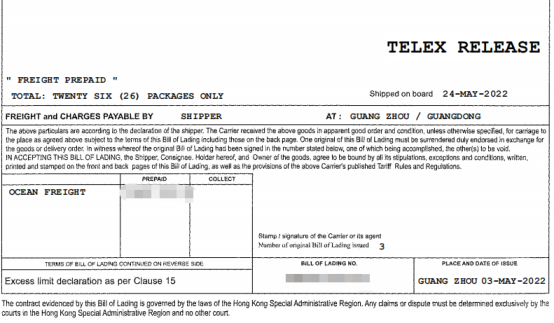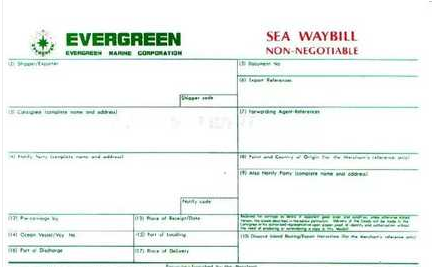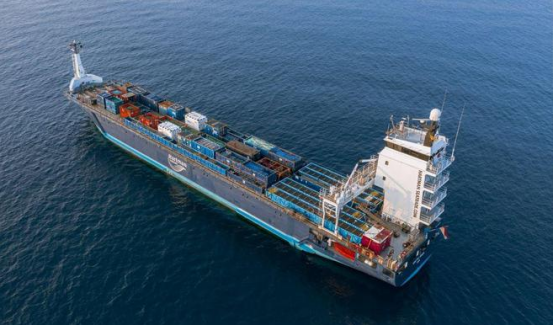1.TELEX RELEASE

Electric release is the shipment of goods out of the ship, the customer requested and issued a letter of guarantee, the carrier does not issue the original bill of lading or to recover all the original bill of lading has been issued under the premise of e-mail, fax or telegram, etc. to notify its agent in the port of destination, the transport of goods delivered to the consignee designated by the shipper. Is directly let the shipping company to notify the agent at the port of destination to release the goods, without the original bill of lading, as long as they are proved to be the consignee and be telegraphed, you can pick up the goods.
Advantages: convenient, fast and safe (avoid the risk of losing the bill of lading).
Disadvantages: the consignor can not control the cargo rights, and there are additional electric release fees for electric release.
Note: Not all countries can do electric discharge, like Venezuela, Chile, Brazil and some other countries can not do electric discharge.
2.ORIGINAL BILL OF LOADING
The original bill of lading issued by the shipping company is a document of title, according to which the consignee extracts the goods, it can be endorsed and transferred, is an important document; SHIPPER will get the original bill of lading from the freight forwarder, scanned to CNEE (consignee), CNEE arrangements for payment, SHIPPER and then the entire bill of lading express mail to CNEE, CNEE with the original bill of lading for bill of lading to pick up the goods.
Advantages: convenient for buyers to pick up goods immediately, simplify procedures, and no additional documentary costs.
Disadvantages: Not suitable for short sea freight, easily lead to delay in import pickup and additional demurrage charges.
3.BILL OF DESTINATION RELEASE
Bill of destination release,Is agreed by the consignor and the shipping company, the bill of lading directly in the destination of the bill of lading, the consignee directly to the shipping company agent to get the original bill of lading. Generally need the consignor to issue a foreign release bond. Because many countries in South America customs is not allowed to electric release of bills of lading, in order to avoid the goods to the bill of lading can not be, you can use this model.
Advantages: convenient, fast, safe (to avoid the risk of loss of the bill of lading).
Disadvantages: the consignor does not control the right of shipment, and there is an additional cost for the electric discharge of the purpose.
4.SEA WAYBILL
Definition: short for SEA WAYBILL, is a form of bill of lading release. Once the SWB is issued, the cargo right is transferred from SHIPPER to CNEE, that is to say, CNEE can directly pick up the goods, SWB pick up does not require the original, and no electric release fee, for the trust of the company can use this form of release.
Advantage: in the fast order, quick pickup, convenient, fast.
Disadvantages: generally no way to control the goods.
Application scenarios.
1. all received payment for the goods can be issued after the sea waybill.
2. multinational companies, China's is a subsidiary specifically responsible for foreign parent company procurement in order to pick up the goods convenient, fast can be issued a sea waybill.

Written by Vivi


